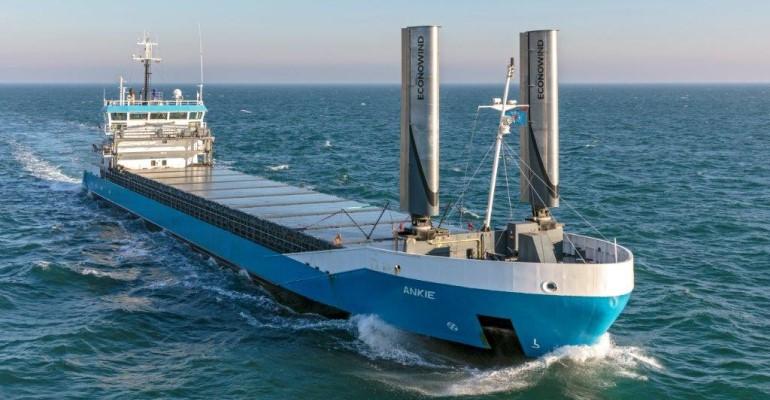Five installations of wind propulsion technologies have been tested over a three-and-a-half year period, providing significant volumes of data on retrofitted systems for existing merchant vessels. Savings of up to 10% were recorded, depending on route and ship operational profile.
The project, funded by the Interreg North Sea Europe programme, part of the European Regional Development Fund, involved shipowners, wind-assist technology providers, and universities. A key element of the project was the establishment of standard procedures for sea trials of ships equipped with wind power technologies and the creation of key performance indicators in collaboration with the International Towing Tank Conference.
Danish ferry company, Scandlines, was one of the participating shipowners. Marko Möller, Manager Special Projects, said: “We are proud to be part of this amazing project. By the WASP installations realised and evaluated during the project lifetime, wind technology proved to be an important element of the decarbonisation process … For Scandlines, the positive results were a decisive factor to install another rotor sail on the sister ferry of the Copenhagen.”
Dutch shipowner, Boomsma Shipping, was also involved. Co-owner Johan Boomsma said: “We believe energy efficiency is key and are always open to new developments. That is why we are sailing with the eConowind Ventifoils on mv Frisian Sea. I think the three major factors – unit costs, fuel prices, and European ETS legislation – are combining in such a way that wind-assisted propulsion will soon become one of the standard solutions.”
Although the project has now ended, its findings will continue to provide a valuable resource for shipowners and operators considering wind-assist retrofits. The WASP Project website will remain active, holding extensive information about the technology installations and an ability to track ships engaged in the project.
It has contributed to a far better understanding of wind propulsion technologies and benefits as the North Sea continues to pioneer new developments in the field.
Copyright © 2024. All rights reserved. Seatrade, a trading name of Informa Markets (UK) Limited.
Add Seatrade Maritime News to your Google News feed.  |

